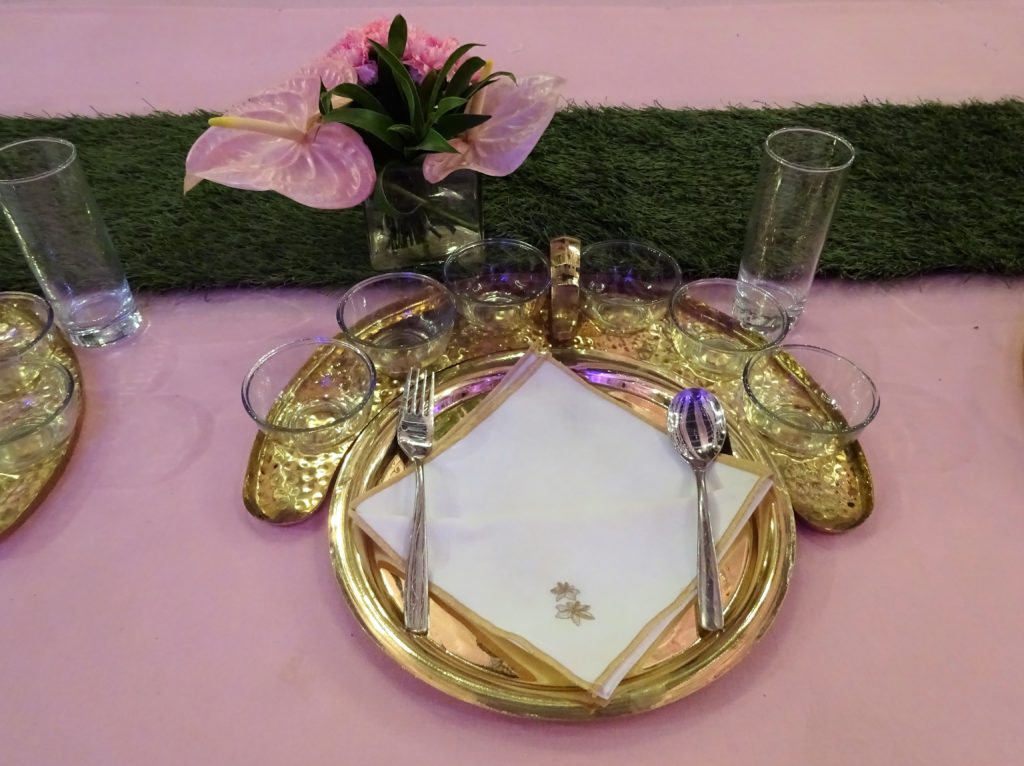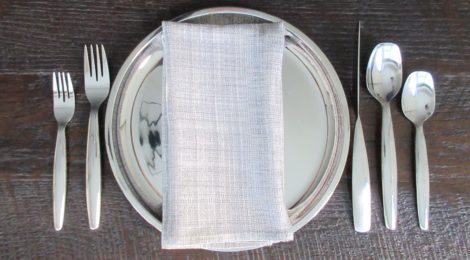
The Dinnerware Set that was Missing
The tradition of getting dinnerware or fine china for as a wedding gift is pretty much gone. Given that fact plus the fact that I’ve personally been in the dinnerware business for years you’d think the last thing we would have received as a wedding gift is dinnerware. The difference was I married into an Indian family. Despite having way more dinnerware sets than I should admit to having I apparently still didn’t have my bases covered according to Indian standards. I was missing stainless steel plates.
Every Indian household has a set of stainless plates. They’re called thali. You’ll find them not only in every home but everywhere from very high-end restaurants and occasions to temple food halls and Sikh gurdwaras. The most common reasons I’ve heard for the popularity of stainless plates is that the light weight makes stainless plates easy for elderly ladies obsessed with keeping everyone well fed to lift them in and out of cabinets and to the table. Durability, of course, is another common reason given for preferring stainless. Corelle and white tempered glass plates are popular for the same reasons. In fact, the Corelle brand itself is very popular in India as well as Southeast Asian countries. Most Indian homes will have both Stainless and some version of a Corelle-type set.
Not just any stainless plates will do. There are two primary types. The first is a simple shallow plate curved edge used with food that is scooped up with bread (Naan, Chpati, Parathas, or many other Indian flat breads) directly on the plate. The scooping makes the shape of these plates somewhat specific. They need to have an abrupt curved turn up at the outside edge so that it’s easy to scoop the food into the bread without it going off the plate. These are the kinds of plates we received as a wedding gift.
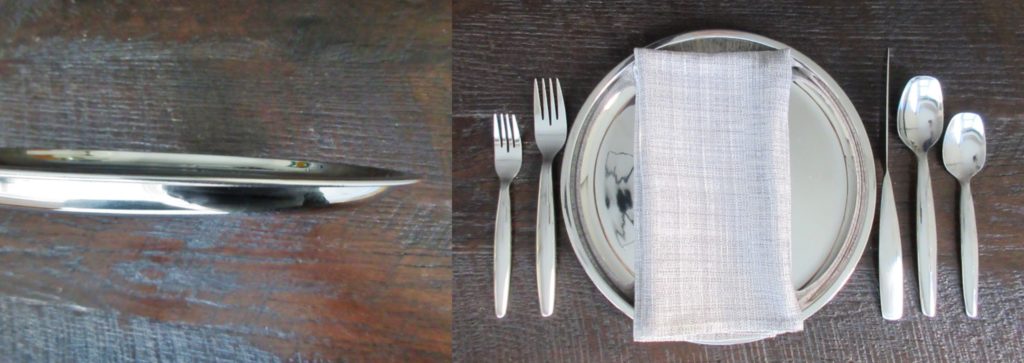
The stainless plates we received from a close friend in India for our wedding. They dress up really nicely! Note the shape of the rim shown in the photo on the left. The steep upturn is important for scooping up dahl and rice with a piece of naan without it going off the plate.
The second primary type of stainless plate may certainly be commonly found at home especially in the Indian state of Gujarat but is also more the type of plate you’d find in restaurants especially roadside restaurants called Dhabas. This type of Thali has a tall rim around it and is usually served with a number of small stainless bowls that fit into it called katori (or Vaati or Vadki) that hold various dishes especially a lentil dish called dahl.
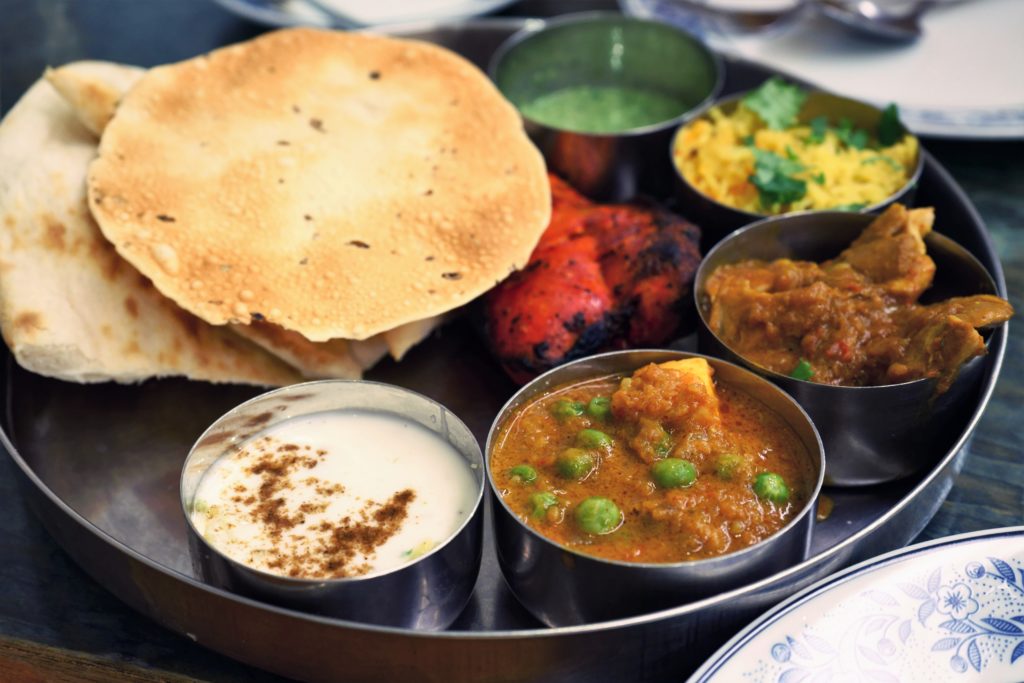
The other kind of Thali with the high straight edge intended to hold katoris or small stainless dishes of other dishes such as mattar paneer (peas and cheese), mint chutney, yoghurt, and dahl. This type is more common in restaurants in most of except in the Indian state of Gujarat where it’s the standard form at home as well.
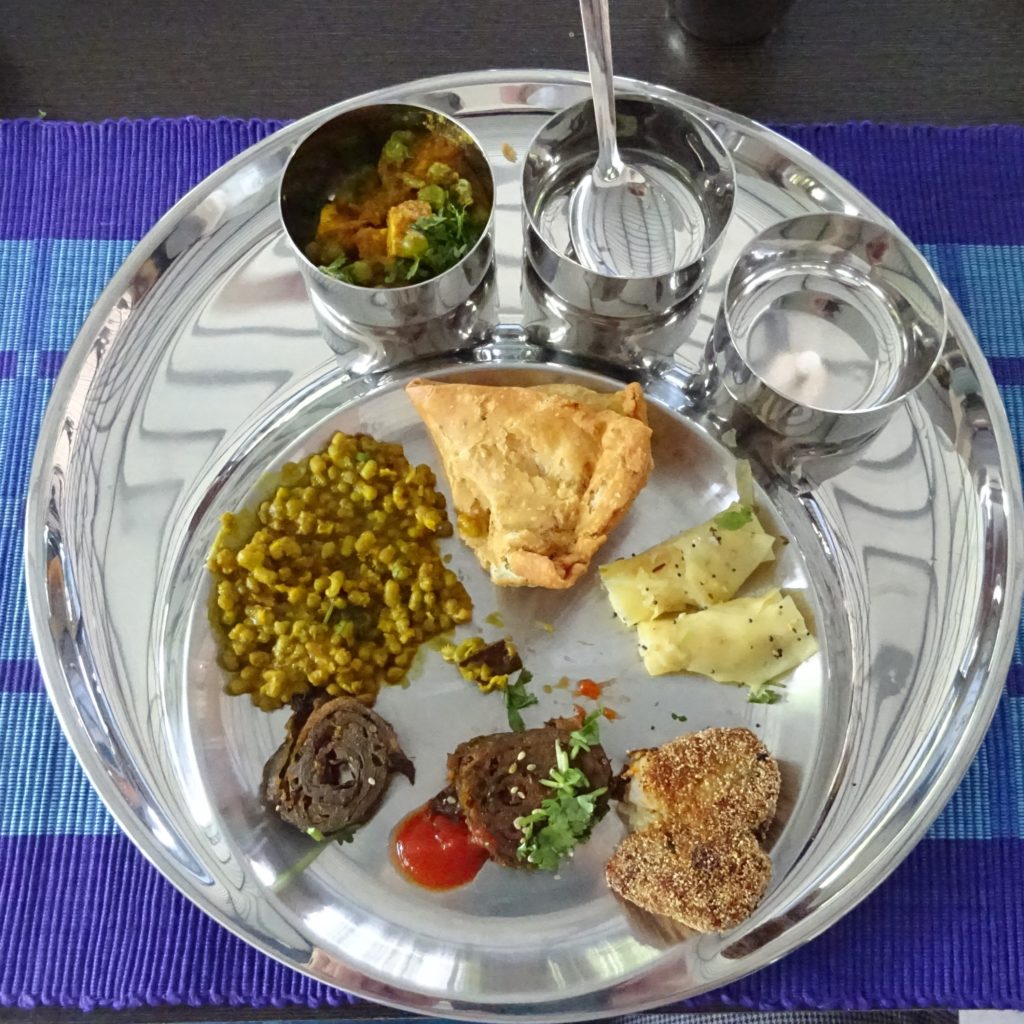
A meal I was served visiting a family in Gujarat. This doesn’t have the tall rim like the one above but has the tray for the bowls formed into the main plate. Families use this setup at home for everyday meals
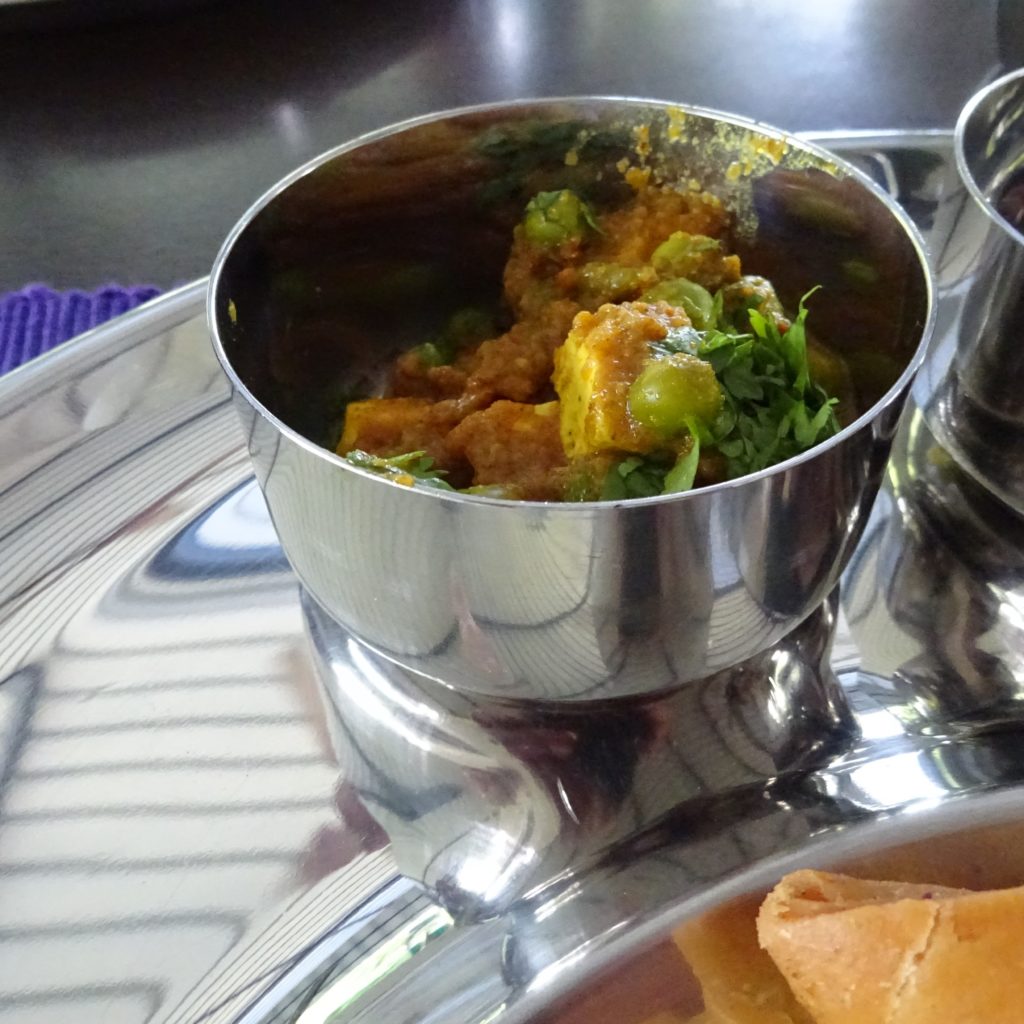
One of the katori bowls that is part of the set above. There are little wells in the tray beneath for this bowl to fit into to keep it from sliding around.
As basic as this kind of plate is you’ll still find elevated versions of it at very formal affairs. Gold plated versions of thali can be found at extravagant weddings. These fancier ones have a main plate with a separate curved tray attached to it. The main plate usually holds the rice and bread and the curved tray holds the katori dishes.

A high-end Punjabi wedding in South Dehli using the gold-plated stainless thali below. This was just the table for close friends and family. There were nearly 3000 guests. We ate in an adjoining hall.
There’s a third type of stainless plate. It’s a divided plate like the typical cafeteria plate. This type, however, is less common in homes and more common in restaurants or temples.
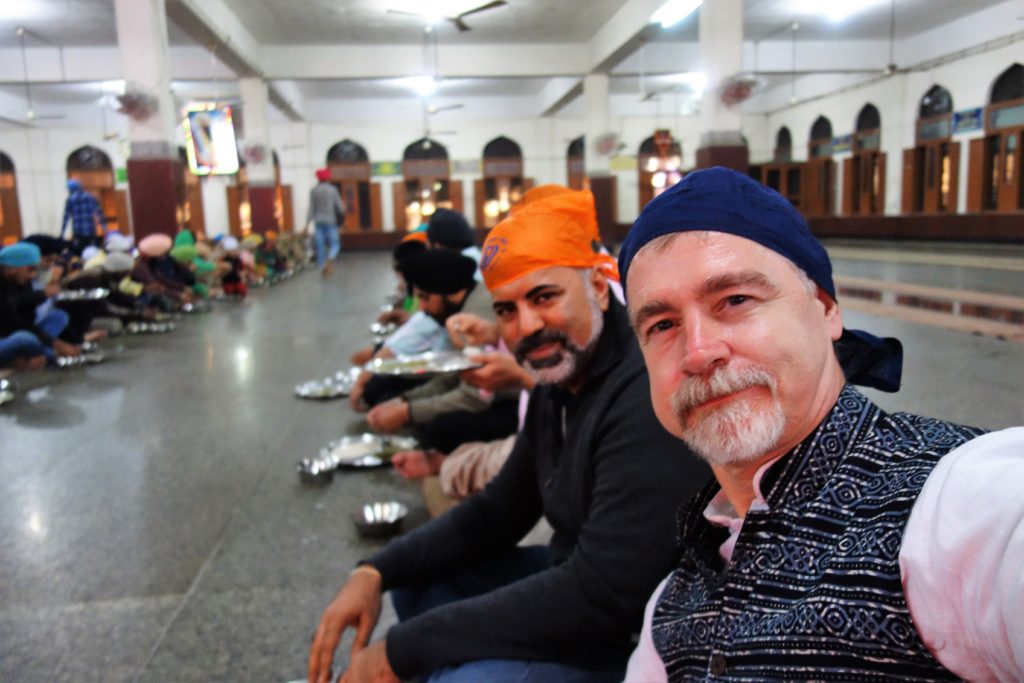
Ashish and me at the langer (Kitchen but really ‘community meal’) at the Golden Temple in Amritsar Punjab, India. Sikh communities take on a solemn duty to feed the community. Nearly all Sikh temples serve community meals to anyone who anyone who comes. This was served in the traditional way on the floor with stainless plates. Getting to know your neighbors and feeling that sense of community is encouraged.
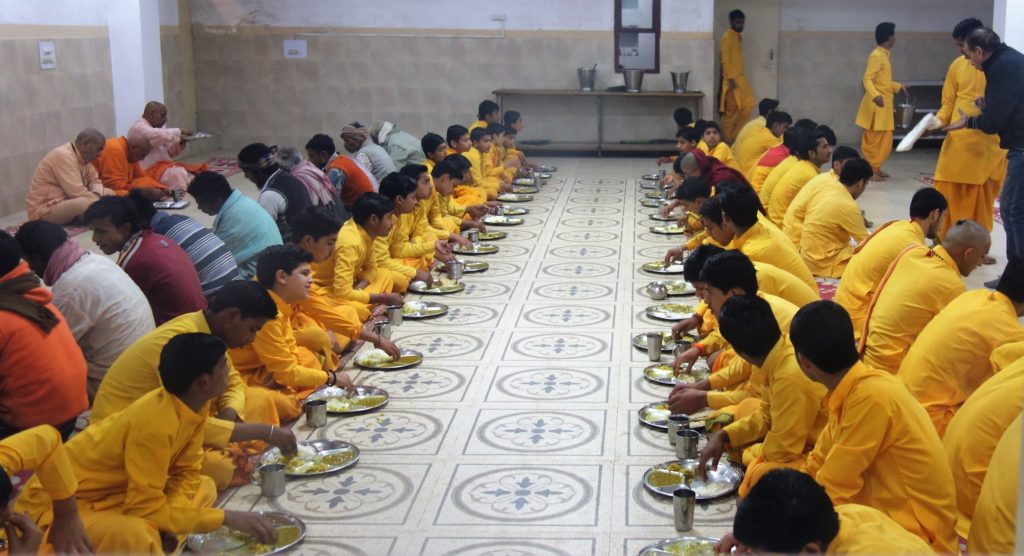
Young monks at the Parmarth Niketan ashram in Rishikesh, India have dinner in the food hall on divided stainless plates. We were there for the Maha Shivaratri.
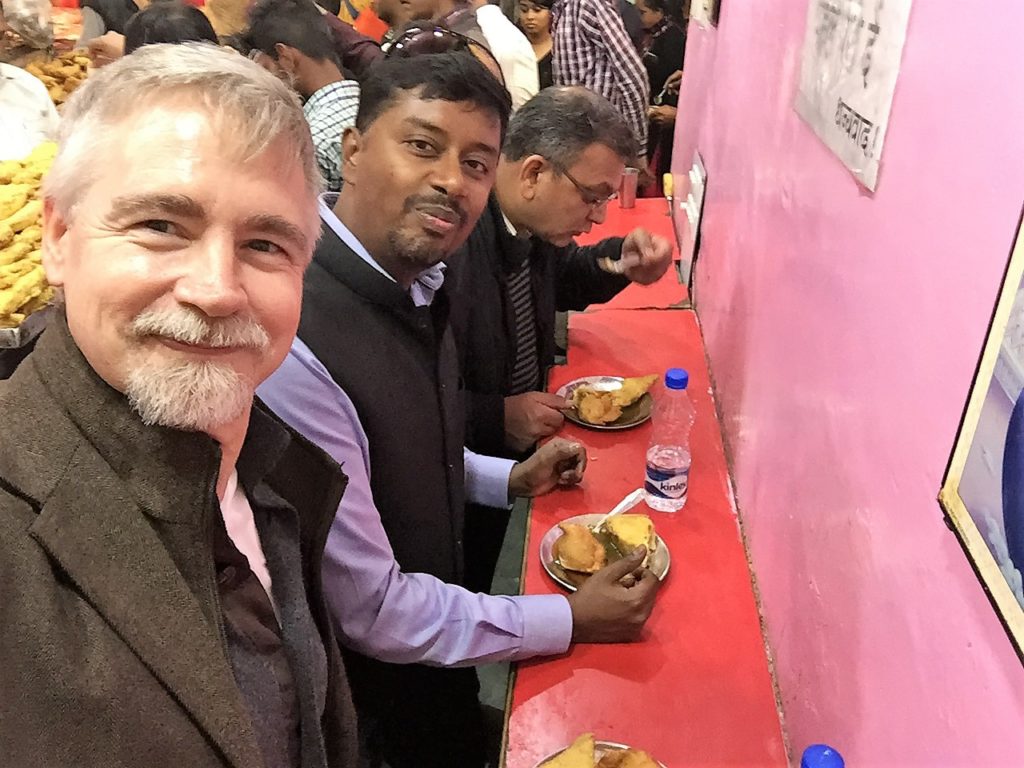
Street food with close friends in South Delhi. Enjoying bread pakoras on stainless plates with cold green and red chutneys.

